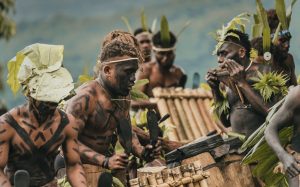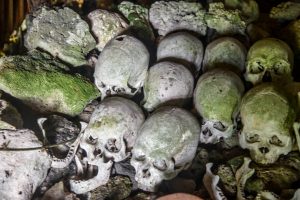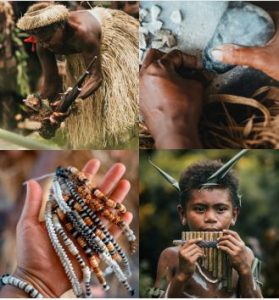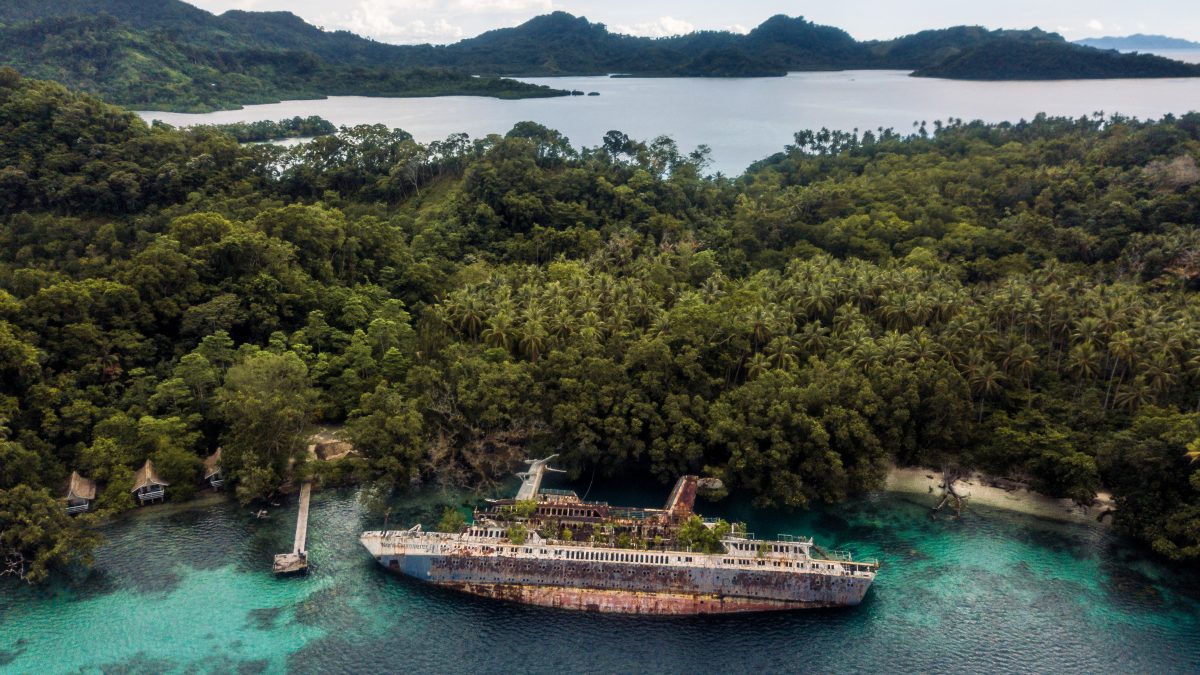Vacations & Travel – The Archipelago Time Forgot
While just three hours’ from east-coast Australia, the Solomon Islands is like a time capsule of treasured traditions, not to mention dramatic wilderness areas that feel like they cleave off the edge of the Earth. By Natasha Dragun
There’s a ramshackle zipline from the top of MS World Discoverer that sees you summersault into the opaline waters of Roderick Bay to disembark. The local kids do it with ease, performing trick after trick and hooting with laughter as they fly down the rusty trapeze.
World Discoverer is a permanent fixture in this hamlet – the half-sunken ocean liner has been lying, half-submerged and tipped to one side, since 2000 when it fatefully hit an uncharted reef. In the 25 years since, nature has reclaimed it – fish swim through its port holes, trees sprout from its upper deck, barnacles cling to the hull.
It’s at once eerie and impressive, stuck in a time limbo in this astonishingly beautiful pocket of the Solomons, the vast South Pacific swallowing it up amid its galaxy of islands. ISLAND BLISS Three hours east of Brisbane, the Solomons consists of almost 1,000 islands and coral atolls on its own, strewn like jewels across 28,000 square kilometres of ocean.
They were named after King Solomon by a 16th-century Spanish adventurer who came chasing legends of gold, but instead found an archipelago where the real treasure lies in its untrammelled beauty. From my room in Honiara – the country’s capital on the northwest coast of Guadalcanal – I watch the scissor-like silhouettes of birds turning among apricot coloured clouds as dusk steals across the water.
I feel like I’ve been transported into a South Seas dream: the scent of blossoms, the murmur of surf, a warm breeze rattling the palms, shattered moonlight on the water, tree frogs chirping like birds. Guadalcanal, like many islands in the Solomons, is steeply mountainous, its volcanic peaks often haloed in clouds. It’s unpolished and unfiltered, in the best possible way. Malaita, my next stop, is even more gloriously primordial.

Panpipe Orchestra – Malaita Highlands © Tourism Solomons Solomon
JUNGLE RHYTHMS
The tiny twin-prop ferrying me to Malaita circles low over the island’s interior, a tangle of Jurassic jungle carved by waterfall-cooled valleys. The shores are all palm groves and mangroves and empty white beaches; dolphins dance in a sea so vivid it makes me ponder whether there are enough words in English for ‘blue’.
Off the west coast is the vast Langa Langa Lagoon, necklaced with manmade islands – locals literally built them one rock at a time, diving for coral in the reef and stacking it in a nook protected from weather and potential enemies.
Laulasi is one of these islands, a speck in the sea home to around 20 people – and a few hundred skulls. Everyone on the island shares resources and works together, whether to prepare meals, build huts or care for kids. There’s a pocket of the island where only women can go, to give birth and during menstruation.

Skull Shrine – Langa Langa Lagoon © Tourism Solomons Solomon
And those skulls that only men can visit? They have been here for centuries, meditated by priests who send prayers and offerings to the ghosts of dead ancestors. The other thing this region is known for building is boats – grand, polished and made from hard woods like u’ula and vasa.

CLOCKWISE FROM TOP LEFT: Traditional dancers at Roderick Bay; making shell money is a time consuming process; a child musician in Malaita’s highlands; strands of shell money © Tourism Solomons Solomon
Once upon a time, the main form of currency for these sturdy vessels was shell money; long strands of polished shell discs comprising romu (from red-lipped rock oysters), white ke’e, black kurila (horse mussel shells) and cream discs (kakadu).
Most Langa Langans have a chest filled with the currency, just in case, and still use it to trade on occasion, and as dowery. Holding a glossy red 2.5-metre strand in my hands – worth around $1,500 – I feel the weight. Not just of the value of this hefty piece, but also of the significance that somehow this time-consuming and incredibly beautiful tradition has managed to survive decades of credit cards and Apple Pay.
Around 30 discs of kakadu is equivalent to $2, about the price of an icy SolBrew. Bartender – set up the tab.

